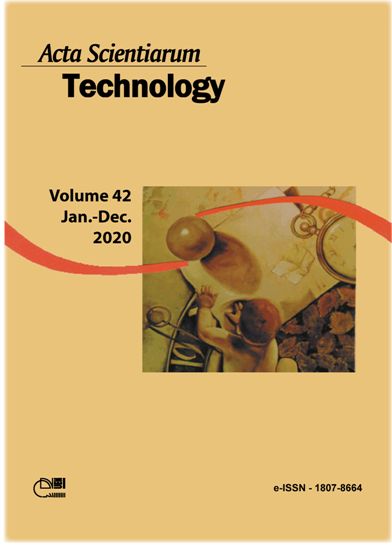Optimizing the ultimate recovery by infill drilling using streamline simulation
DOI:
https://doi.org/10.4025/actascitechnol.v42i1.45293Palavras-chave:
ultimate recovery; recovery factor; streamline simulation; infill well; infill drilling; horizontal well; vertical well; water flooding.Resumo
Even though numerical simulators that use the finite difference approach to model the oil and gas fields and to forecast the field performance are popular in the petroleum industry, they suffer from a very long central processing unit (CPU) time in the complex reservoirs with large number of grids. This issue could be resolved by streamline simulation and it could significantly decrease the runtime. This work explains the the streamline simulation concept and then a real oil field is studied using this technique, the streamline simulation is conducted by a commercial simulator, i.e., FrontSim streamline simulator and then the model was analyzed to find the optimum location of infill wells. In this work, 34 different cases were studied using Streamline simulation method and FrontSim software by considering different arrangement of infill wells. It was concluded that a significant enhancement in the ultimate recovery factor of the oil reservoir could be attained by considering different arrangement of the infill horizontal and vertical wells. It was highlighted that the ultimate recovery factor could be increased significantly, i.e., 13%. Additionally the water cut of the field could be reduced significantly. The novelty of this work is to capture the impact of both vertical and horizontal wells on the ultimate recovery enhancement simultaneously using the concept of streamline simulation and optimization of the field performance using streamline simulation concept.
Downloads
Downloads
Publicado
Como Citar
Edição
Seção
Licença
DECLARAÇíO DE ORIGINALIDADE E DIREITOS AUTORAIS
Declaro que o presente artigo é original, não tendo sido submetido í publicação em qualquer outro periódico nacional ou internacional, quer seja em parte ou em sua totalidade.
Os direitos autorais pertencem exclusivamente aos autores. Os direitos de licenciamento utilizados pelo periódico é a licença Creative Commons Attribution 4.0 (CC BY 4.0): são permitidos o compartilhamento (cópia e distribuição do material em qualqer meio ou formato) e adaptação (remix, transformação e criação de material a partir do conteúdo assim licenciado para quaisquer fins, inclusive comerciais.
Recomenda-se a leitura desse link para maiores informações sobre o tema: fornecimento de créditos e referências de forma correta, entre outros detalhes cruciais para uso adequado do material licenciado.



















